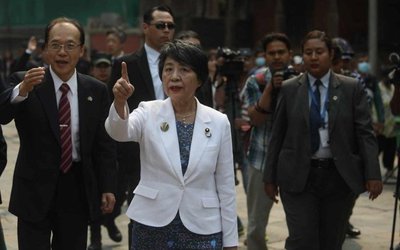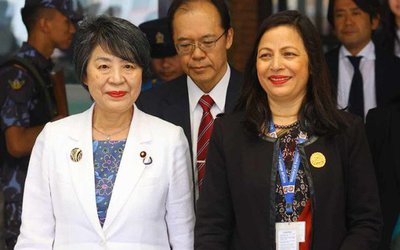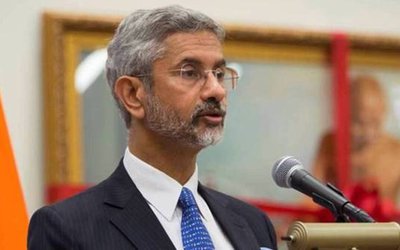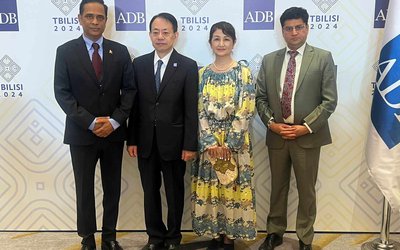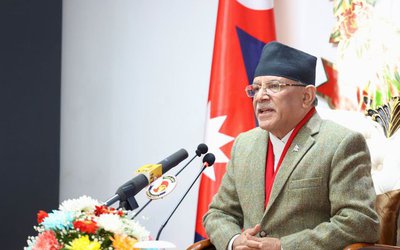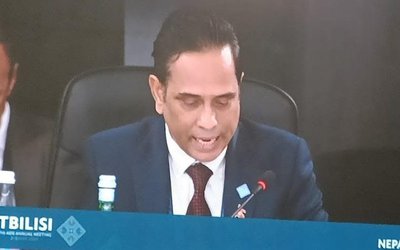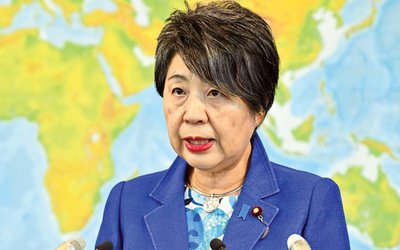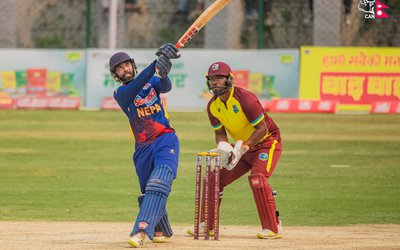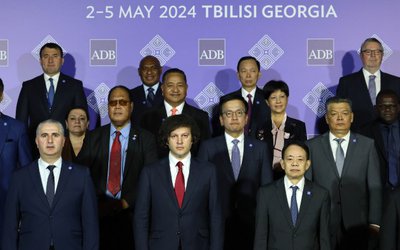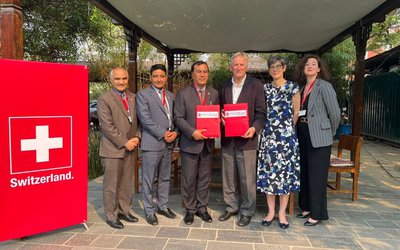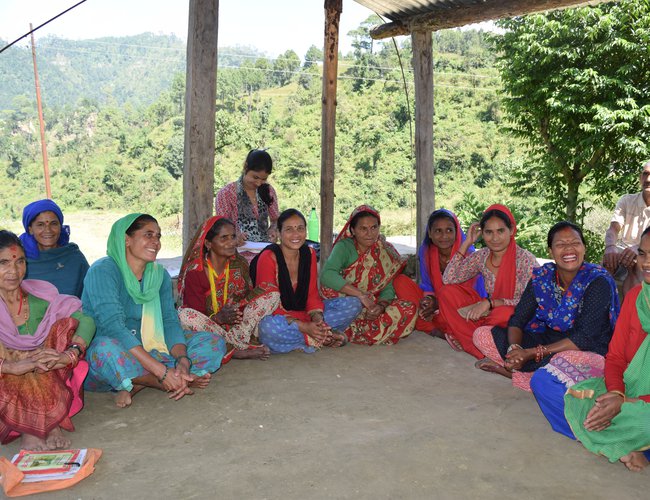
For the last one decade, Suntali Sarki, 29, now an elected ward chair of Dashrathchand Municipality, of Baitadi District, has seen many ups and downs in her life. Surviving with parents as Haliyas of local landlord, eating rotten corn and millet, Sarki had a life as a painful story.
Married with a mason, a freed Haliya, she also worked as construction labor for the time being even after emancipation. Coming to be organized under Mukta Haliya Samaj Mahasangh, she was among a few hundred women to receive the livelihood package of LWF-Nepal to transform her life. She is now an elected member of Dasharth Municipality.
“My own journey has shown that political empowerment is possible for Haliyas only through economic empowerment. The support provided by LWF-Nepal Haliya Mahasangh helped me to achieve the economic independence changing the traditional pattern of agriculture,” said Sarki, a mother of two.
With support for vegetable farming, Sarki started to produce surplus vegetables and earning money annually up to Rs.100,000 (US$ 900). Traditionally, the land owned by them produces the crop not enough to feed the family for two months. In this scenario, many Haliyas used to go to India for employment.”
Under the livelihood package of LWF-Nepal, there are cooperatives, Transformation Education Program, agriculture, enhancing traditional skills, commercial agriculture and market linkage.
The life of Durga Sarki, 65, a resident of Sela Village of Jorayal Rural Municipality, ward 2 of Doti District, 700 kilometers west of Kathmandu, Capital of Nepal, has transformed drastically in the last nine months. Sarki, a member of Freed Haliya Agriculture Group of Sela, has already sold a goat at the price of Rs, 10,000 ($85) and vegetables worth of Rs.40, 000 ($350) in the last eight months.
Literacy class launched under TEP turned seventy-one years old Panna Devi Nepali, a freed Haliya, and a vocal activist. After taking class, her confidence level has gone up. This brings a major change in her life. Mother of two sons and four daughters and eight grand-children, Panna Devi can read Nepali letter and put her written signature.
A resident of Sela Village of Jorayal Rural Municipality, ward 2 of Doti District, 700 kilometer west from Kathmandu, Capital of Nepal, the life of Panna Devi Nepali and her other neighbors has improved a lot.
Along with literacy and social campaign, the project improving the resilience of rural livelihood options for IDPs - Freed Haliya communities in Nepal came with the livelihood component as well. Supported by Lutheran World Federation-Nepal and ELCA, Upekshit Samudaya Sashaktikaran Bikash Munch, (USSBM) Doti has been launching the program targeting women from Haliya as a local partner.
Elected member of Nawadurga Rural Municipality Ward No 2, Kausilya Damai, 34, who is also currently vice president of Rashtriya Mukta Haliya Samaj Mahasangh, has a bitter experience of social discrimination even the elections.” Other elected representatives of Rural Municipality treat me differently in meetings and other programs,” said Damai.
Bleak Picture
There is a bleak picture in government program. A decade after the emancipation of Haliyas, a bondage labor, the rehabilitation of freed Haliyas has still to happen fully. Just 38 percent of Haliyas have received the government’s rehabilitation packages so far, with a large number of others outside the support. Given the present pace of government’s effort and socio economic conditions of Haliyas, it seems that the complete rehabilitation and integration of Haliyas in the mainstream will be likely to take another five to ten years.
As the process of receiving the government package is complicated, with so many administrative hassles, many registered Haliyas are deprived of the government’s rehabilitation package.
As the government is yet to start the process of completing the remaining work related to freed Haliya rehabilitation, including the process of issuing identity cards, constructing quake resistant houses, providing safe, arable land and employment opportunities, freed Haliya of nine districts are getting significant benefits from a project implemented by LWF-Nepal in partnership with Evangelical Lutheran Church in America (ELCA) and implementing partners Upekshit Samudaya Sashaktikaran Bikash Munch, (USSBM) in Doti and Rashtriya Mukta Haliya Samaj Federation Nepal in remaining eight districts including Dadeldhura, Baitadi, Darchula, Bajhang, Bajura, Kailali, Kanchanpur and Accham.
Launched in February 2018 and concluded in January 2019, the 12 months long project improving the resilience of rural livelihood options for IDPs - Freed Haliya communities in Nepal has already set an example of how things can change in freed Haliya communities.
Along with advocacy, the project has also promoted poultry, off season vegetable, education for children, nutrition, WASH, entrepreneurship, new startup, upgrade of skills, the project also provides nutritious food to freed Haliya families under its sustained livelihood program. Even with limited resource, the project is also responding to the education and health needs of children of freed Haliya. During the implementation, the project has adopted Human Rights Based and participatory approach in course of project planning, implementation, monitoring and evaluation.
The LWF-Nepal project is targeting 8,008 freed Haliyas from 9 districts, Bajura, Doti, Baitadi, Kanchanpur, Dadeldhura, Bajhang, Achham, Darchula and Kailali of Far-western province of Nepal.
Along with the formal group, the project also indirectly targets 19,059 freed Haliya families/IDPs identified by government of Nepal. The project also focuses program to policy changes.
“Haliyas are facing triple discrimination based on being Haliyas, Dalit and for their gender. Thus, this is a very complex issue which requires a long program for sustained livelihood and advocacy,” said Dr. Prabin Manandhar, country director LWF-Nepal. “There is the need to have strong advocacy to inform this reality.”
Following the field interactions with freed haliya families in Doti, Dadeldhura and Baitadi districts, what one can see is a need of strong advocacy for enlisting the left out freed Haliyas, proper categorizing, and accessing full rehabilitation package from the government.
“As a group which lived under slavery for centuries, deprived of all rights and state’s services, providing money to build house or purchase land is not enough to make them politically as well as economically free. The experience of last ten years has shown that emancipation of Haliyas has ended a cycle of slavery but pushed them in another form of economic and livelihood hardship. Unlike other group, Haliays faced double digit oppression as a dalit and Haliya for centuries placing them in the bottom of society,” said Bal Krishna Chaudhary, Regional Program Coordinator West of The Lutheran World Federation Nepal.
The freed Haliyas have become homeless after their release. Historically, they are subject to a wide range of human rights abuses, including severe beatings, forced starvation and water deprivation as punishment and various forms of humiliation, Haliyas are yet to find a respite.
Thousands of freed Haliya are still deprived of livelihood assets and market access as well as formal and technical education for their children. Traditional occupations of freed Haliya are still not readily accepted as decent work in society which puts a hindrance to their livelihood opportunities in 9 districts.
Expanded in 9 districts of far western remote areas, the project wants to bring changes among Haliyas. In a short period, LWF-Nepal’s programs have shown that freed Haliyas require advocacy and sustained livelihood programs, which can increase awareness level and economic progress.
As most of the Haliyas live in subsistence agriculture with indigenous and traditional profession, they need a scheme for modernization and commercialization of agriculture through vegetable and poultry, goat rearing and livestock vegetable production, small irrigation in on farm and upgrading of their traditional professional skills in iron workshop, tailoring, cobbler and carpenter and groceries in off farm. For their economic growth and livelihood, there is the need to establish the cooperatives of haliyas to maximize their economic activities.
LWF-Nepal has been launching a small project with the task to make Haliyas self-reliant. With a better coordination among freed Haliya community, civil society organizations, elected local level, provincial and central government, the project is achieving the target to make Haliyas self sustainable.
“The programs launched by LWF-Nepal and its partners in Dadeldhura district are quite efficient,” said Mohan Raj Joshi, Chief District Officer of District Administration Office, Dadeldhura.
Unlike the government’s big interventions, one can see far-reaching transformation in the livelihood of freed Haliya communities in nine districts through a small intervention made by LWF Nepal.
Who are Haliyas?
Haliya is a system of agriculture bonded labor that prevailed in 12 western hill districts of province 6 and 7 of Nepal. Haliyas are mainly from the hill Dalit group. According to statistics, out of them 97% are Dalit and 3% others casts.
Haliyas used to work at their landlord’s place for generations to repay the debt taken by their forefathers. According to a study, Haliyas are socially and economically deprived community. After signing a 5-point agreement with Haliya Organization, Nepal government abolished Haliya system in 2008 and freed them from debt and haliya system.
The haliya system allowed a well-to-do family to keep a tenant as slave for life for a small sum of loaned money. The system, which was prevalent in western and far-western Nepal, was abolished in 2008.
After emancipation of Haliyas, the government had announced 4 categories A, B, C and D. According to the classification, people with no house and land are under A category. Those who have house but no land are category B and those who have land but no house are under category C. Those who have land and houses are under category D. Under the rehabilitation package, the government agreed to provide 325,000 for category A to purchase land, and 325,000 for construction of house for A and C in hill and 225,000 in Terai. For B and D, the government agrees to provide Rs.125, 000. However, the rehabilitation packages are neither sufficient nor complete.
“The government wants to settle Haliya rehabilitation program within a year. We are expecting the support from non-state actors like LWF-Nepal and elected local levels,” said Gopi Mainali, secretary of Ministry of Cooperative, Land Management and Poverty Alleviation.
LWF-Nepal Program
Under the program, intensive projects are implemented in Doti, Bajura and Baitadi districts and advocacy related interventions were made in Bajura, Doti, Baitadi, Kanchanpur, Dadeldhura, Bajhang, Achham, Darchula and Kailali districts. Launched in February 2018, the project is going to wrap up in January 2019.
The project is designed with an aim at improving dignity of the internally displaced people especially freed Haliya communities through empowerment focused development and advocacy for their rights and access to sustainable livelihoods assets.
With an overall goal to improve dignified living conditions of the internally displaced peoples- especially freed Haliyas communities through empowerment focused development and advocacy for their rights and access to sustainable livelihoods assets, the program achieved the target.
The program implemented in the last nine months have helped improve diversified livelihood options and strengthened farm-to-market links of 610 freed Haliya families.
Under a program, LWF helps promote quality education of 350 freed Haliya Children for literacy, numeracy and transformative life skills. The project has completed programs to enhance advocacy capacity of 8,008 Freed Haliya families and their institutions for formulating and implementing freed Haliya friendly local plans and policies to increase access to public services and resources and timely and just rehabilitation.
A total of 126 freed Haliyas elected as local government representatives, however, have inadequate capacities to influence decision making in favor of the priority and needs of freed Haliyas communities due to illiteracy and low level of awareness on their rights.
Nearly 19,059 HHs of Haliya got freed from bonded laborers and 97% of them belong to Dalits, so called untouchable caste and living as internally displaced peoples (IDPs). A survey report of LWF Nepal revealed that above 60% of Haliya are landless; only 2% of freed Haliya have year round access to food, though 55% of them are involved in agriculture; 87% of them live in temporary shelters, 93% have inadequate access to safe water for household purpose; epidemics and deaths from diarrheal diseases due to unsafe water and sanitation in the area occurs repeatedly; minimal participation in decision making process; caste-based discrimination and untouchability practices on the other hand create barriers in every step in accessing rights to dignified lives.
As rehabilitation packages are not sufficient and complete, former landlords threaten and compel them to repay loans or remain as haliya, who have unemployment and unequal wages- limited skills.
“With large numbers left out, there is the need to advocate for re-verification and registration of unregistered freed Haliyas, timely and comprehensive rehabilitation package, allocation of resource for freed Haliya and access to government services and entitlements, advocacy for freed Haliya and Dalit policy formulation and implementation,” said Hari Singh Bohara, Project Coordinator of Rashtriya Mukta Haliya Samaj Federation.
There is the need of livelihood support to freed Haliya families, technical education support to freed Haliya children, capacity building to freed haliya women and strengthening freed Haliya women-led cooperatives,” said Bohara, who has been a part of Haliya Freed Campaign for last 15 years.
What has been done by Project?
To improve diversified livelihood options and strengthened farm-to-market links 610 freed Haliya families, the project has already supported the programs to open a market center and provided awareness and demonstration of family nutrition through kitchen gardening.
It has also developed production pocket areas of vegetables and high value crops in Doti and Baitadi. Promotion of leasehold and crop sharing farming for landless families; installing micro-irrigation schemes, entrepreneurship skill development training in SIYB package, Technical and Vocational Skills for Entrepreneurs, Business start-up supports, Establishment of market collection centers are other schemes. It has also strengthened Freed Haliya women-led pro-poor & inclusive cooperatives.
It also launched sanitation campaigns for latrine construction, ODF and post-ODF and established multiple water use scheme and strengthened capacity of Water User Committee (WUC). The project also develops WASH entrepreneurs for sanitation marketing at local levels.
To promote quality education of 350 freed Haliya Children for literacy, numeracy and transformative life skill, the project provided computers to Dadabagh Primary School of Basulinga village of Sunariya Rural Municipality Ward 2, Baitadi. The project also launched formal education enrolment campaign, also provided scholarship for freed Haliya children. Support for technical and vocational education, establishment of school library and learning center.
In the last eight months, the project launched various programs to enhance advocacy capacity of 8,008 Freed Haliyas families and their institutions for formulating and implementing freed Haliya friendly local plan and policies to increase access to services and resources.
After conducting capacity development training to elected freed Haliya representatives to local government on leadership skills, human right based planning and monitoring benefited 126 representatives.
The project also implemented evidence based advocacy at local, provincial and national level governments for efficient rehabilitation of freed Haliya and increase access to land resources, including the ESCR monitoring
Facilitating Freed Haliyas, organization to bring their issues at district and province level. After launching, transformative education for freed haliya women leaders, it enhances the personal level of knowledge and skills. The project also launched program of financial literacy and supported cooperatives to manage their accounts.
LWF’s project has been there in a very short period. LWF conducted the survey during the monsoon. The elections of local and center disturbed the work as well as the social and cultural barriers there but LWF has been able to perform despite its lack of skilled manpower, because LWF always brings people with consultation of people. The project is in the phase out stage.

Keshab Poudel
Poudel is the editor of New Spotlight Magazine.
- IFAD/MoICS’s SMRIDDHI: Retaining Returnee Workers
- May 03, 2024
- MoICS/IFAD: SAMRIDDHI’S Leading To Apprenticeship
- May 01, 2024
- MoICS AND IFAD: SAMRIDDHI For Entrepreneur And Employment
- Apr 29, 2024
- IWMI: SoLAR Global Science-Policy Forum Conference
- Apr 25, 2024
- CLA: Samriddhi For Skill Development
- Apr 23, 2024

